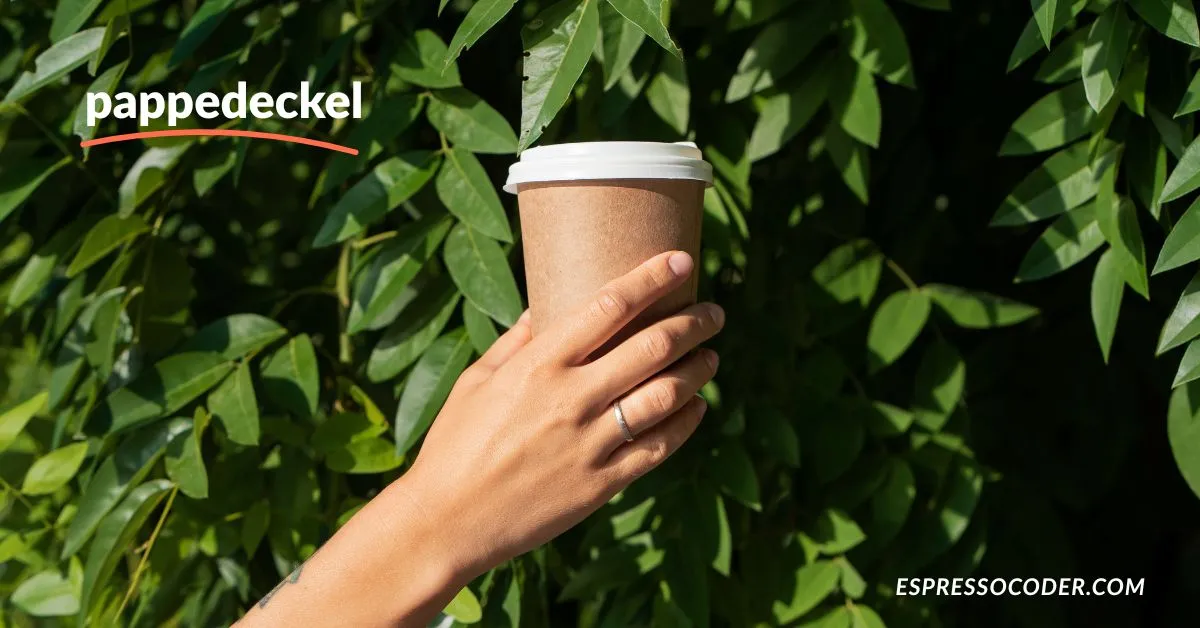When we think of sustainability and everyday convenience, one small yet impactful invention often goes unnoticed — the Pappedeckel. This German term literally translates to “cardboard lid”, and it refers to the lightweight, disposable covers used for cups, particularly in the beverage industry. While it may seem like a minor detail in the grand scheme of packaging, the Pappedeckel has become an important symbol of eco-friendly design, practical functionality, and waste reduction in modern consumer culture.
What is a Pappedeckel?
A Pappedeckel is a circular piece of cardboard, often used as a lid or coaster for hot and cold beverages. It’s designed to protect drinks, keep them warm for longer, prevent spills, or act as a hygienic barrier between the drink and the consumer. Traditionally found in cafes, bakeries, and restaurants in Germany and across Europe, the Pappedeckel has earned its reputation as a simple, cost-effective, and environmentally conscious product.
A Short History
The origins of the Pappedeckel date back to the early 20th century, when disposable packaging solutions began to gain popularity. With the growing demand for takeaway beverages, cafés and food vendors needed something affordable and safe. Cardboard proved to be the perfect material: it was lightweight, easy to produce, and biodegradable. Over time, Pappedeckel evolved from basic coasters to functional cup lids, especially as the coffee-to-go culture spread rapidly in Europe.
Functions and Uses
Though small in size, the Pappedeckel plays multiple important roles:
- Hygiene – Protects beverages from dust, insects, or outside contamination.
- Heat Insulation – Keeps drinks warmer for a longer time.
- Spill Prevention – Helps avoid accidental spills during transportation.
- Branding Tool – Businesses often print their logos or promotional designs on the lids.
- Eco-Friendly Alternative – Unlike plastic lids, cardboard lids decompose naturally and are recyclable.
Environmental Significance
One of the most compelling aspects of the Pappedeckel is its eco-friendly nature. With global attention shifting towards sustainable alternatives, replacing single-use plastics has become a top priority. Plastic cup lids, which are commonly used worldwide, can take hundreds of years to decompose. In contrast, Pappedeckel products are biodegradable, recyclable, and often made from recycled paper fibers.
By switching from plastic to cardboard lids, businesses reduce their environmental footprint and align with growing consumer demand for greener practices.
Pappedeckel in German Culture
In Germany, the Pappedeckel has a unique cultural significance. It is not only a practical tool but also a symbol of everyday thrift and resourcefulness. For many Germans, using cardboard lids and coasters is second nature, reflecting the country’s strong tradition of recycling and environmental responsibility.
Interestingly, “Pappedeckel” is also used as a playful or humorous term in colloquial German, sometimes meaning something cheap or of little value. Despite this informal usage, the product itself is highly valued in modern society.
The Future of Pappedeckel
With sustainability at the forefront of innovation, the Pappedeckel continues to evolve. New designs focus on improving water resistance, sturdiness, and compatibility with modern beverage containers. Some manufacturers are experimenting with organic coatings, plant-based fibers, and reusable versions to make the cardboard lid even more sustainable.
As more cafés, restaurants, and food chains move away from plastic, the Pappedeckel is poised to play an even larger role in shaping the future of eco-friendly packaging.
Conclusion
The Pappedeckel might seem like a simple piece of cardboard, but it represents far more than that. It is a practical, eco-friendly, and culturally significant invention that highlights how even the smallest innovations can have a lasting positive impact. In a world where every step towards sustainability counts, the humble Pappedeckel stands out as a symbol of responsibility and smart design.
Would you like me to make this article more SEO-optimized with headings like “What is Pappedeckel?”, “Why is it eco-friendly?”, “Uses of Pappedeckel”, etc., so it can rank better on Google?

